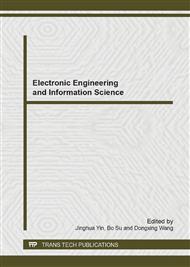[1]
Li Hong. Chinese food supply chain risk and critical control point's analysis [J]. Jiangsu Agricultural Sciences, 2012, 40(5): 262-64.
Google Scholar
[2]
Thadakamaila, H. P., et al. Survivability of multiagent-based supply networks: a topological perspect., Intelligent Systems, IEEE 19. 5 (2004): 24-31.
Google Scholar
[3]
Jin-Li Guo. The bilateral power-law distribution model of supply chain networks., (2006): 3916-3921.
Google Scholar
[4]
Sun, Huijun, and Jianjun Wu. Scale-free characteristics of supply chain distribution networks., Modern physics letters B 19. 17 (2005): 841-848.
DOI: 10.1142/s0217984905008797
Google Scholar
[5]
Balan S, Vrat P, Kumar P. Risk analysis in global supply chain network environments[J]. European Journal of Operational Research, 2006, 174(3): 1353-1367.
DOI: 10.1016/j.ejor.2006.11.007
Google Scholar
[6]
Yu, Min, and Anna Nagurney. Competitive food supply chain networks with application to fresh produce., European Journal of Operational Research (2012).
DOI: 10.1016/j.ejor.2012.07.033
Google Scholar
[7]
Zhang, Guimei, Walter Habenicht, and Walter Ernst Ludwig Spieß. Improving the structure of deep frozen and chilled food chain with tabu search procedure., Journal of Food Engineering 60. 1 (2003): 67-79.
DOI: 10.1016/s0260-8774(03)00019-0
Google Scholar
[8]
Van der Vorst, J. G. A. J., 2000. Effective food supply chains: Generating, modelling and evaluating supply chain scenarios. Ph.D. thesis, Wageningen University, The Netherlands.
Google Scholar
[9]
Pietro Vecchiato, Maurizio Faccio, Emilio Ferrari, Alessandro Persona. Apply lean distribution principles to food logistics, Proceedings of the 1st International Workshop on Food Supply Chain (2011): 71-90.
DOI: 10.1504/ijor.2013.051784
Google Scholar


